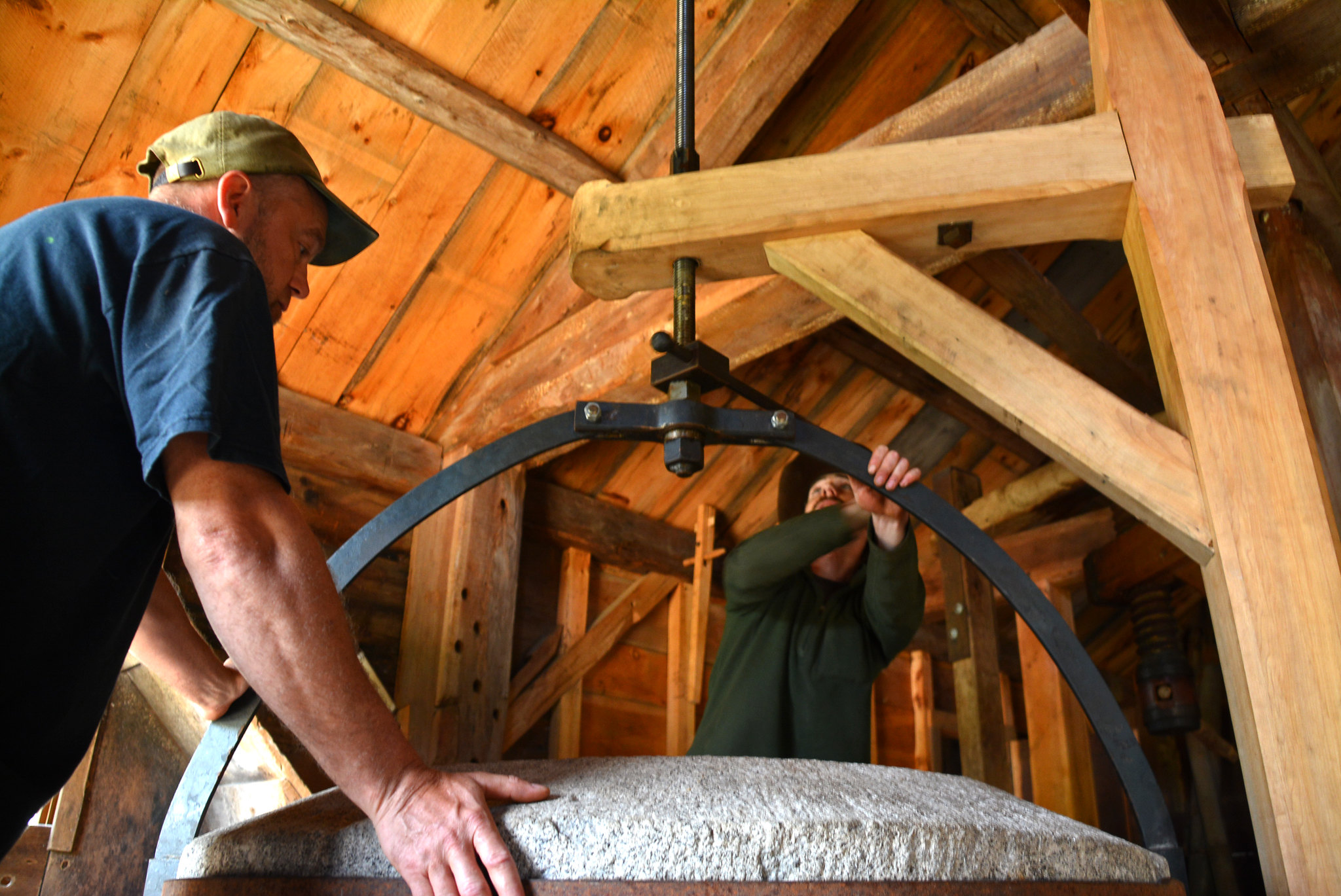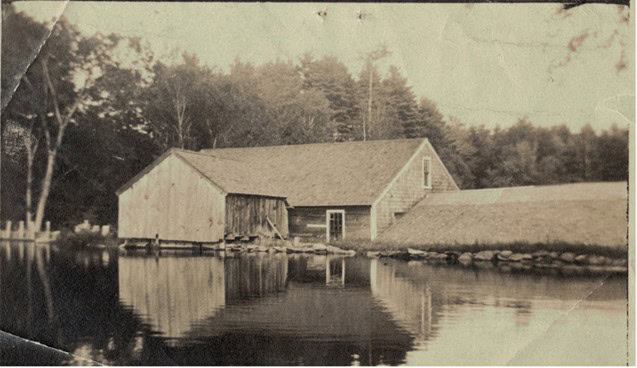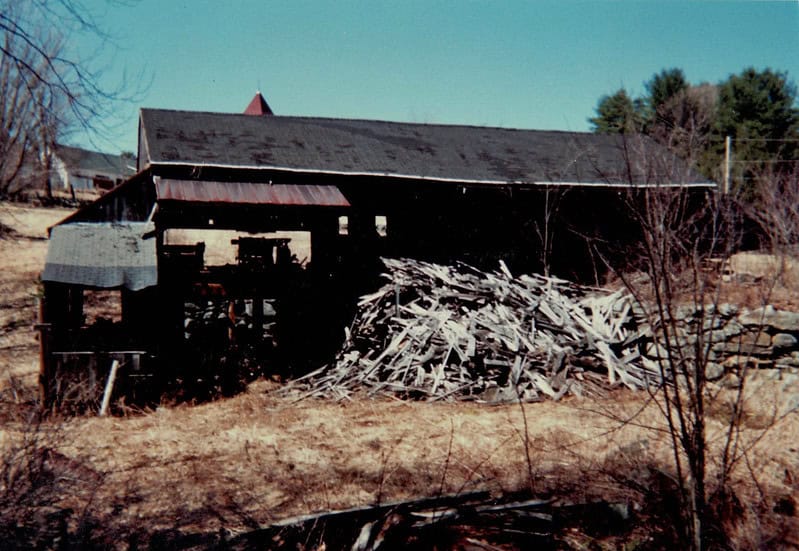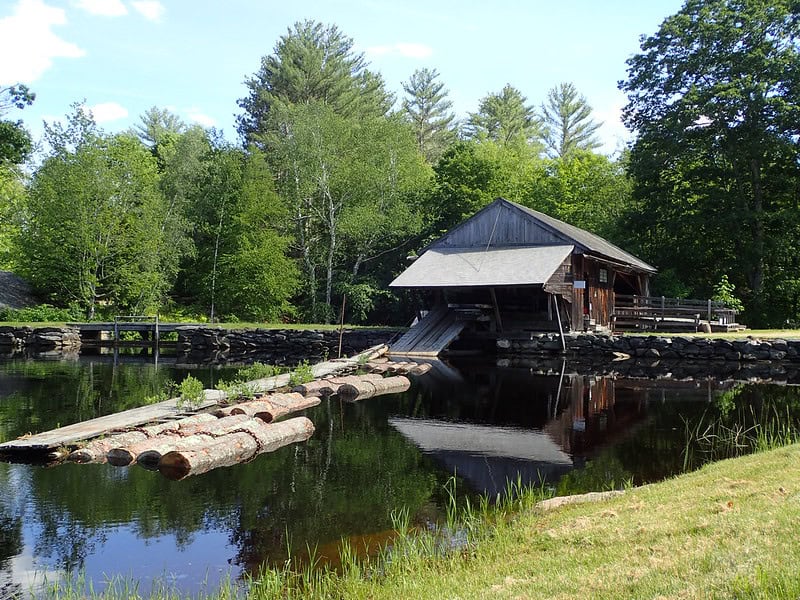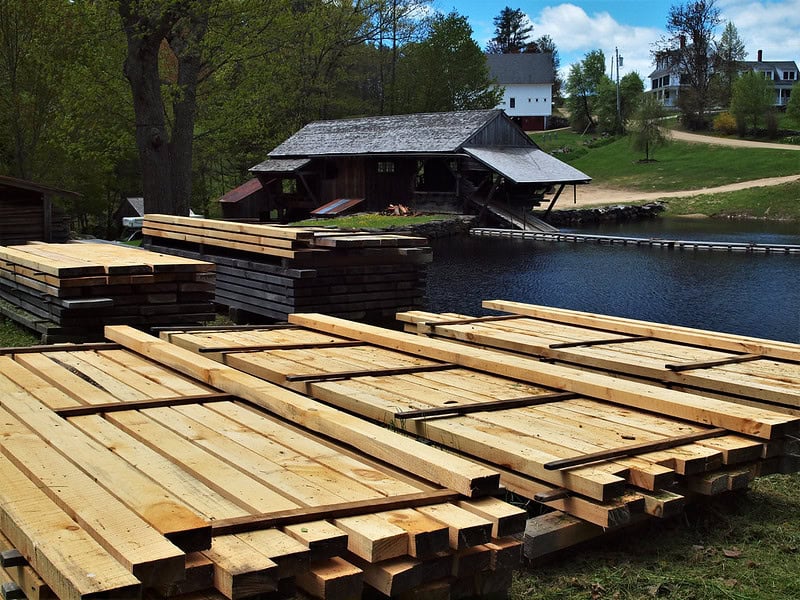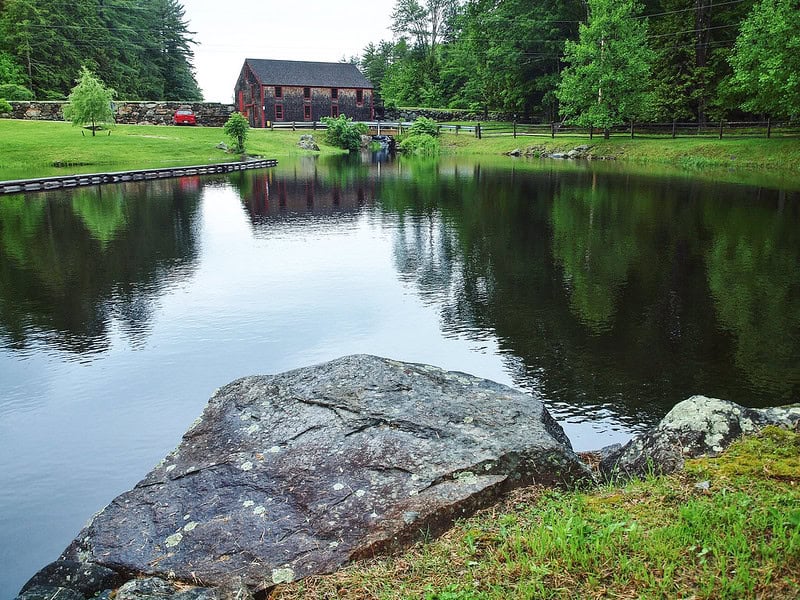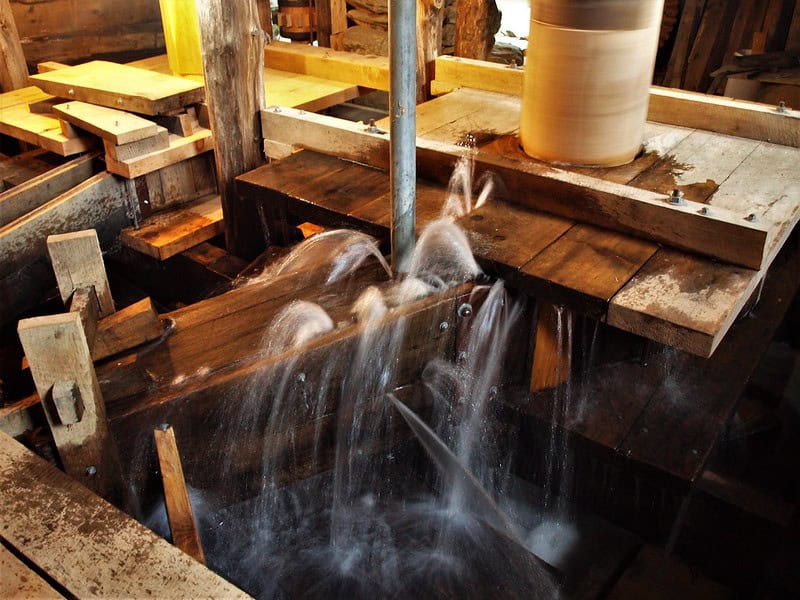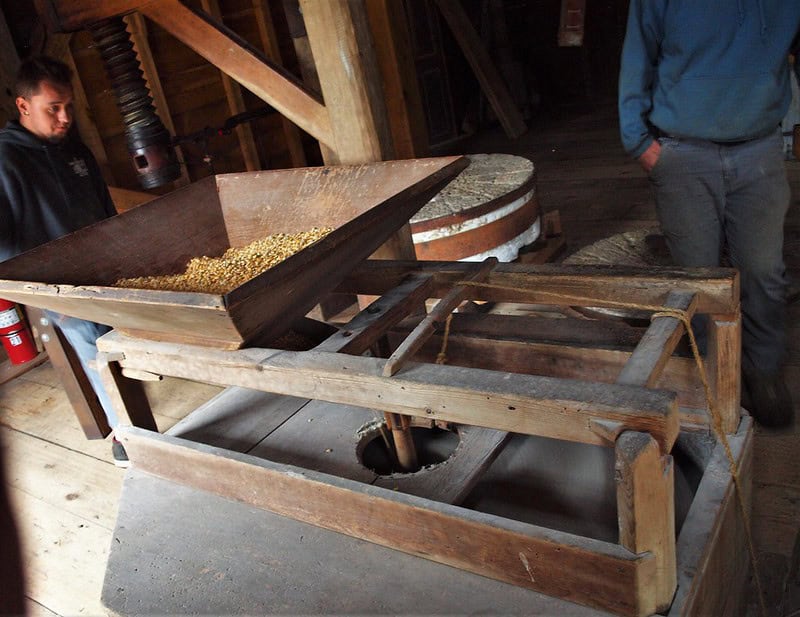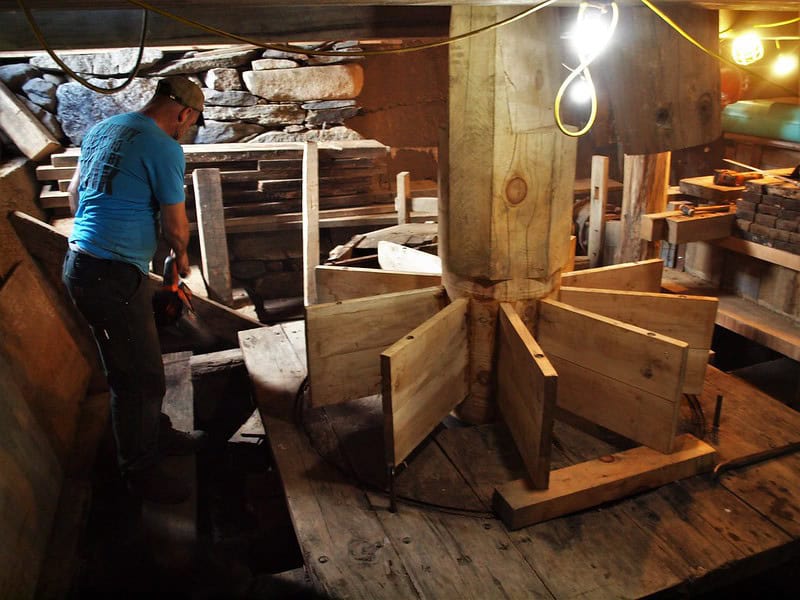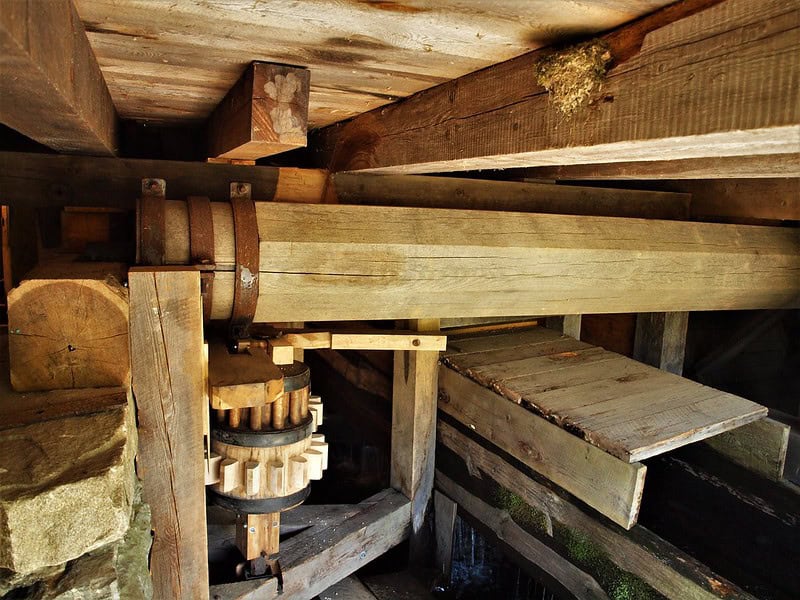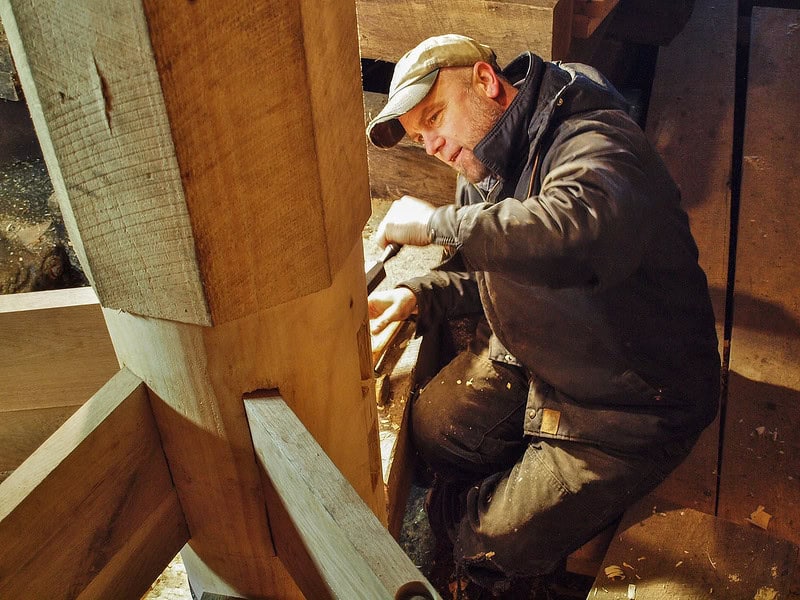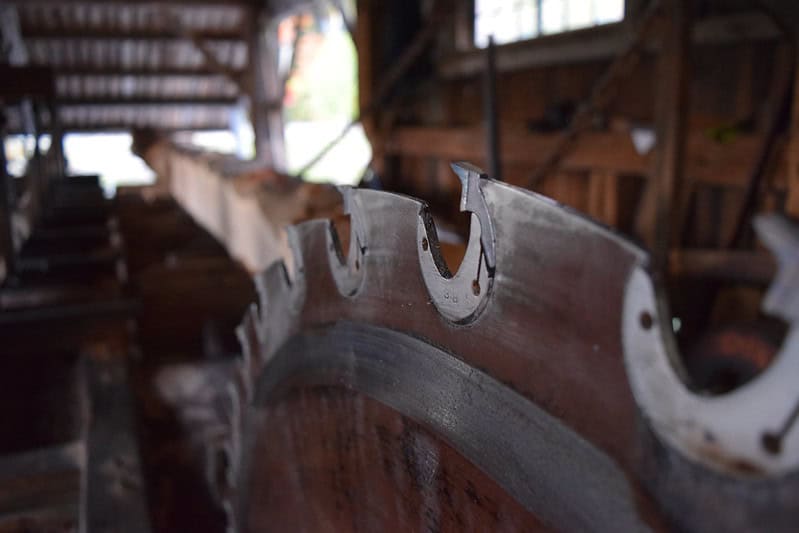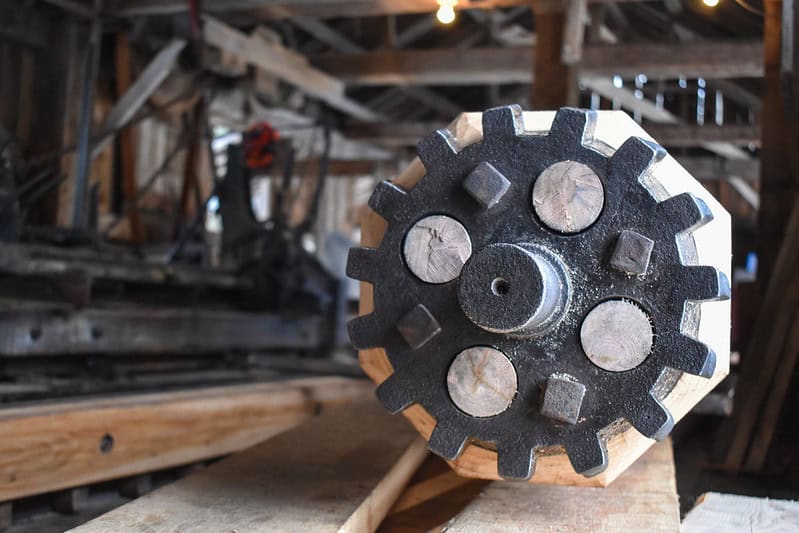The Mills
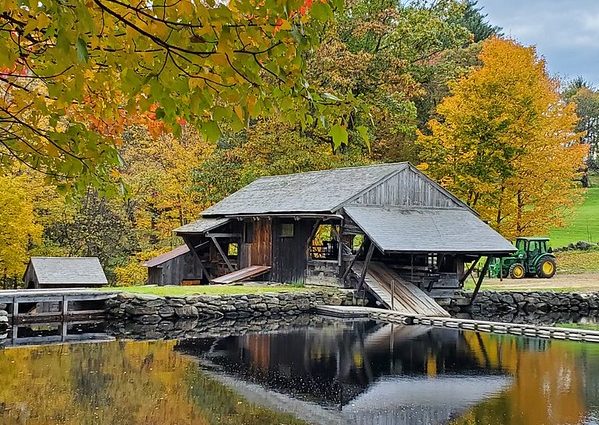
The History of the Saw Mill
Theodore Farnum Elliot designed and built the Sawmill in 1829. An earlier sawmill, built in the 1770s, occupied the same location; the 1829 Sawmill replaced the older mill. The “new” mill utilized scribe-rule mortise-and-tenon construction, and the frame incorporates hand-hewn as well as up-and-down sawn timbers. The original up-and-down saw was replaced in the 1870s with a more efficient water-driven circular saw. In 1891 the present circular saw, featuring a 36-foot-long carriage and built by the Lane Company in Montpelier, Vermont, was shipped by rail to Pittsfield, N.H., then transported by wagon to Sanborn Mills Farm. Logs to be sawn into lumber are floated in the mill pond and pulled up into the Sawmill by chain. Water flow connected to gearing below the Sawmill dam establishes the speed of the saw; at maximum speed, the 54-inch, 50-tooth saw blade turns 650 times per minute. The speed of the carriage is controlled by a lever in the saw husk — the sawyer must not feed the carriage too fast or the saw will jam in the log and ruin the mechanism. This building and its dam required a complete restoration in the 1990s. The saw deck and roof were moved in one piece so that the foundation could be completely rebuilt and the gearing floor and ceiling could be replaced by new timbers. The dam was improved with a concrete core that was then faced with dry-laid stone; this work was completed in February 2002. Restored following a 10-year-long labor of love, the up-and-down saw once again cut logs into lumber beginning in August 2021. The Sawmill at Sanborn Mills Farm is, we believe, now the only water-powered sawmill in the United States with both an operational circular saw and operational up-and-down saw.
The History of the Grist Mill
The grist mill was constructed in 1830 by Theodore Farnum Elliot, after the completion of the saw mill in 1829. There is documented evidence that there was a saw mill and dam on this site dating from the late eighteenth century. Constructed out of up-and-down sawn timbers and measuring 30 by 53 feet, the mill has four levels including the tub wheel floor, the bolter floor, the grind stone floor, and the cleaner floor. The granite field stone foundation is laid in the brook next to the spillway on the upper dam. At one time there was a long storage shed attached to the mill, which partially obstructed the door to the grind stone floor. A gate house still covers the penstock with a gable roof on the dam. The mill has a pair of granite stones for grinding corn and a set of French Buhr stones for grinding wheat. Originally the mill’s hurst frame held three sets of stones in a row with separate drives for each set. A bypass wooden flume provides water to the saw mill pond on the tub wheel floor through a 32 inch pipe run through the dam next to the pipe that feeds the tub wheels for the grind stones.
